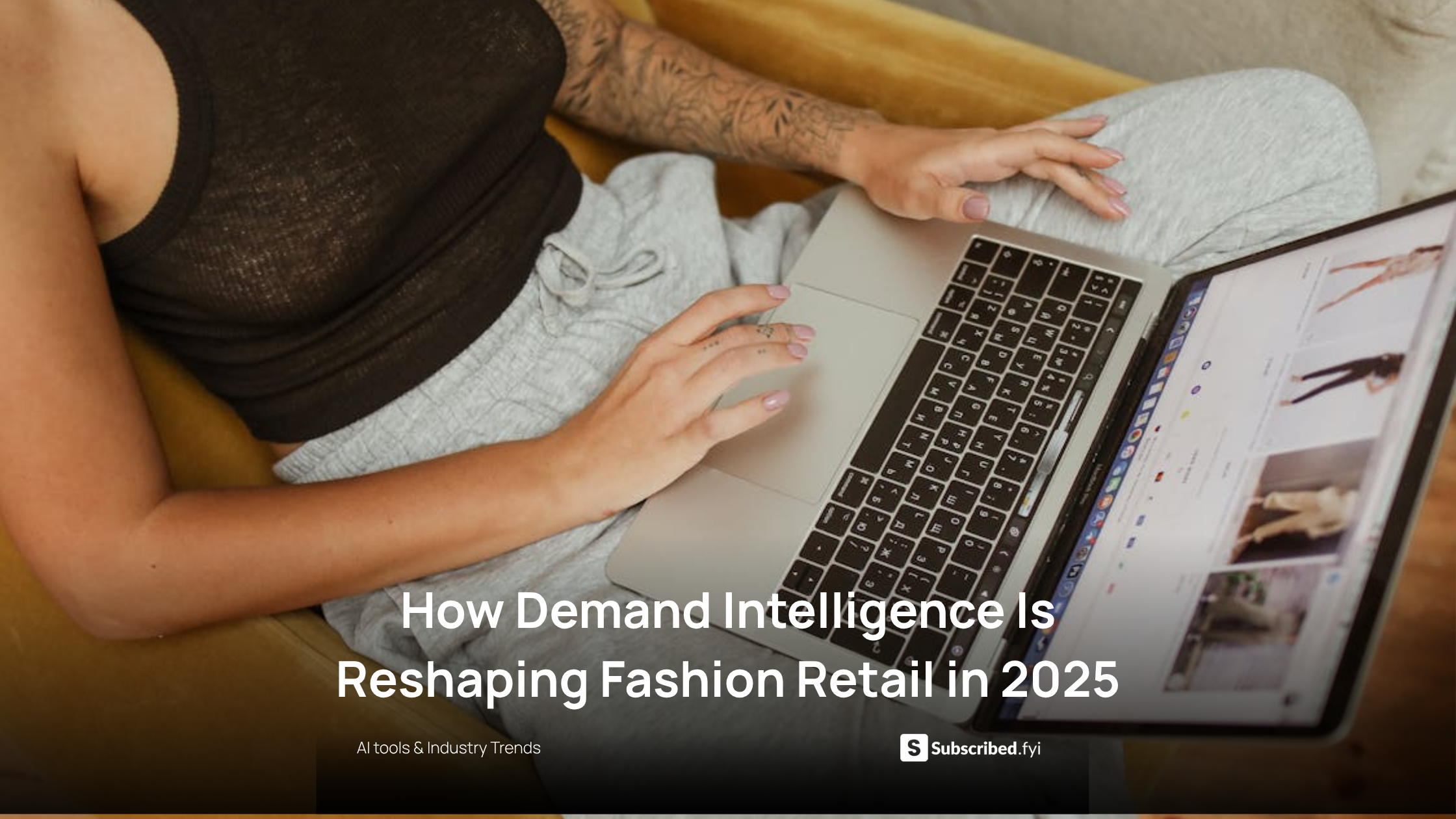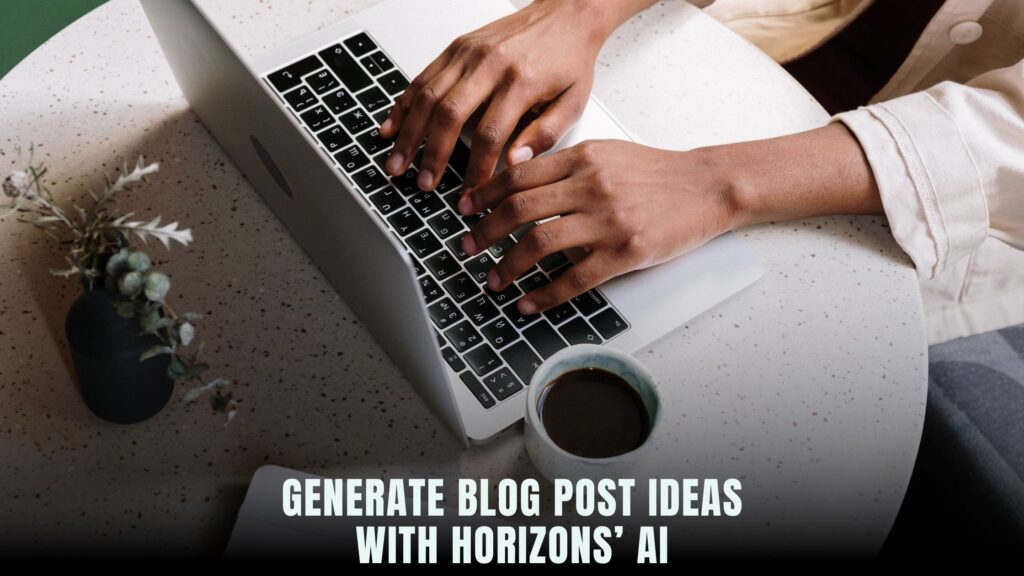AI Forecasting & Demand Intelligence in 2025: The Analyst’s Field Guide
- AI Image Generators Software AI Writing Assistant Popular Tools AI Tools


Fashion retail entered 2025 with a different center of gravity than any era prior. The most valuable AI category is not the one that produces the most glamorous creative output or visually viral experimental campaigns. The most valuable AI category is the one that protects capital before it is deployed. Forecasting and demand intelligence has become the true strategic differentiator, and this is the category where the strongest performance, most measurable operational value, and highest investor conviction now sits.
This is also where the dominant signal emerges across “the fashion AI startups to watch” lists from The Business of Fashion, Vogue Business, Tech:NYC, RetailBoss and FashioNXT. These are extremely different editorial sources, all with different audience profiles and different curation philosophies, yet they all converge around the same macro conclusion: the startups gaining the most traction, the most attention, and the most strategic defensibility are those that are solving forecasting, demand intelligence, inventory probability, and pre-commitment decision making. Not the splashiest design output. Not brand marketing pyrotechnics. Not vanity innovation. Reality grounded forecasting.
This tells us something extremely important about where 2025 fashion AI value is consolidating. Vision is now less powerful than precision. Creative output still matters, but only forecasting governs whether that creativity translates into profit, not just aesthetic. The future belongs to brands and operators who understand what to produce before they produce it, who know which product types deserve capital and which do not, and who model demand curves before committing logistic cycles.
Forecasting AI has become the primary risk reduction engine. And in a margin compressed fashion environment, eliminating preventable loss is one of the highest leverage strategic moves a company can make.
Why Forecasting is the Category That Actually Moves EBITDA
Forecasting used to be visionary trend speculation. Today it is the direct link between data and capital allocation. The fashion cycles of the TikTok era are too volatile for intuition alone. Micro trends accelerate faster, and category life cycles behave more like short lived bursts rather than seasonal arcs. The industry needs precise early demand sensing to reduce overproduction, protect margin, and shape assortment decisions that match true purchase intent.
Investors have also shifted priority. Media and VC lists this year emphasize measurable commercial outcomes over atmospheric future promise. That shift is visible in how forecasting companies show up repeatedly across all 2025 startup guides. They are pragmatic, operationally applicable, and tied to the core cost dynamics of retail.
Global supply chain friction is also influencing this shift. Multiple ecosystems (NYC especially) are leaning into practical AI products that solve inventory allocation, buy-planning precision, and product lifecycle risk. This is where the pressure is highest because fashion cannot afford long lead time misfires anymore.
The Forecasting Thesis
Forecasting AI is the upstream orchestration layer that impacts everything downstream. If forecasting accuracy improves, PDP optimization improves. If sizing probability improves, returns decline. If assortments match true cultural demand arcs, marketing ROI increases. If demand sensing stabilizes buy cycles, pricing strategy becomes far more rational and margin protective.
Forecasting is the high leverage input that makes the rest of the AI retail stack more valuable.
What Analysts Actually Track in this Category
- Forecasting accuracy improvements versus historical baselines
- Stability of prediction under rapid trend volatility
- Size distribution forecasting improvement
- Causality explainability
- Real time cultural ingestion (especially social velocity)
- Vendor performance at both enterprise and mid-market levels
This is how sector diligence is now being done by analysts and private capital.
Representative Tools in This Category
Below is a blended mix of fashion-specific demand intelligence tools combined with horizontal AI forecasting systems used across retail. These reflect solutions highlighted across the same editorial and investor reports mentioned above.
Fashion Forecasting and Demand Intelligence Examples:
- Lily AI: Focused on attribute semantics with direct impact on assortment intelligence
- Raspberry AI: Bridges generative creation to retail forecasting outcomes
- Spangle AI: Combines forecasting accuracy with commerce activation and operating metrics
- Bold Metrics: Uses predictive fit data to improve size curves and buy planning
- FitMatch AI and TrueFit: Size intelligence that strengthens forecasting confidence
- StyleScan: Visual intelligence that helps predict category overlaps and trend similarities
Horizontal Forecasting Systems Used in Retail:
- Forecastful
- Revtap AI
- Tredence
- ZyloTech
- DataRobot
- PRophet / Orbit (advanced open forecasting engines used by internal brand teams)
Regional Forecasting Landscape
Not all markets are accelerating forecasting in the same direction, which means forecasting companies are evolving differently based on which geography they originated in. In the United States and particularly in New York, forecasting AI is treated fundamentally as a capital efficiency category. Companies exist here to shrink error cost. In Europe, forecasting is being shaped by sustainability compliance pressure. Regulations are forcing better prediction and waste minimization. In APAC, forecasting systems have to be resilient to extreme trend cycle velocity, especially when TikTok origin trends cycle weekly instead of seasonally.
This is the beginning of a three vector convergence: capital efficiency logic (US), sustainability logic (EU) and volatility resilience logic (APAC). The global winners in forecasting will be the companies capable of bridging all three of these regional forecasting realities simultaneously because fashion is no longer region-bound.
Analyst Recommended Implementation Structure (90 Days)
The Analyst’s 90 Day Implementation Framework for Forecasting AI
The fastest and most reliable way to implement forecasting AI in fashion is through a controlled, staged transformation model. Analysts evaluating forecasting AI performance in 2025 are not evaluating if a brand can implement forecasting AI. They are evaluating if the brand can operationalize forecasting AI in a way that meaningfully influences capital allocation decisions in under one fiscal quarter. This is where forecasting becomes measurable, not theoretical.
The framework begins with a baseline accuracy benchmarking. This first stage is where brands align their historical sales data, return rates, category-level sell through, attribute dictionaries, and size curve velocity patterns. The first objective is not optimization. The first objective is clarity. You cannot measure improvement if you do not know baseline error.
The second phase is narrow category forecasting. This is where fashion brands choose one to two categories and pilot forecasting systems in a contained domain. By narrowing into controlled category lanes, analysts are able to isolate which forecasting signals matter most. Is category volatility driven more by cultural micro-trend acceleration? Is category volume driven more by seasonality? Is category return rate driven more by size distribution probability? This is where forecasting models begin to reveal which causal variables have disproportionate impact.
The third stage is where forecasting outputs begin to influence pre-season buying decisions, size ratio decisions, and channel-specific distribution strategies. This is where forecasting shifts from model testing to capital stewardship. A brand that successfully integrates forecasting at this stage is no longer optimizing the past. They are pre-correcting the future.
The final phase is where forecasting data flows downstream into pricing experimentation, merchandising sequencing, promotional timing, and inventory rebalancing. When forecasting intelligence connects into downstream commerce, forecasting becomes a core operating system rather than an isolated model.
This 90-day model is why forecasting AI is more powerful than creative AI. Creative AI improves brand experience. Forecasting AI improves business survival odds.
The Bottom Line: Forecasting AI and the Future of Fashion Capital Strategy
Forecasting AI is also shaping how investors evaluate fashion companies themselves. The 2025 investment environment is more value disciplined than at any point since 2011. Investors are now prioritizing portfolio companies that convert forecasting into capital efficiency, not just brand personality. This is a strategic shift that upstream ecosystem media – including The Business of Fashion, Vogue Business, Tech:NYC, RetailBoss and FashioNXT. – are collectively signaling through their editorial curation.
Forecasting AI does not guarantee a brand will win. But forecasting AI dramatically reduces the probability of catastrophic loss. In fashion, avoiding catastrophic loss is power.
It is also reshaping the way brand operators think about design cycles. Forecasting AI is helping brands identify what to accelerate, what to deprioritize, and what not to waste capital believing in. It is not replacing designers. It is protecting designers. It is protecting the future of creative work.
The creative director of 2025 who understands forecasting AI is more powerful than the creative director who ignores it. Because one knows where to direct creative force and the other is guessing.
As forecasting AI matures across 2025 and 2026, the category will likely bifurcate into two directions. The global winners will not be chosen based on the best algorithm. They will be chosen based on which platforms integrate into supply chain workflows and capital planning cycles without friction. Fashion is moving into an operational era where AI must be useful regardless of creative cycles.
Conclusion
Forecasting AI is no longer optional for operators in fashion. It is the new foundation of product strategy. It determines which items deserve capital. It determines how fast brands can respond to volatility. It determines how efficiently brands can scale without waste. And it determines which fashion AI startups are actually “the ones to watch” based not on creativity, but based on economic contribution.
The industry has spent the past three years talking about generative AI. The next three years will be shaped by predictive AI. Forecasting is where the future gets priced correctly before it happens.
Relevant Links
- Subscribed.fyi
- https://subscribed.fyi/ai-tools/
- https://subscribed.fyi/marketing-and-analytics/
- Lily AI: https://www.lily.ai/
- Raspberry AI: https://raspberry.ai/
- Spangle AI: https://spangleai.com/
- Bold Metrics: https://www.boldmetrics.com/
- FitMatch AI: https://www.fitmatch.ai/
- Forecastful: https://forecastful.com/
- DataRobot: https://www.datarobot.com/











